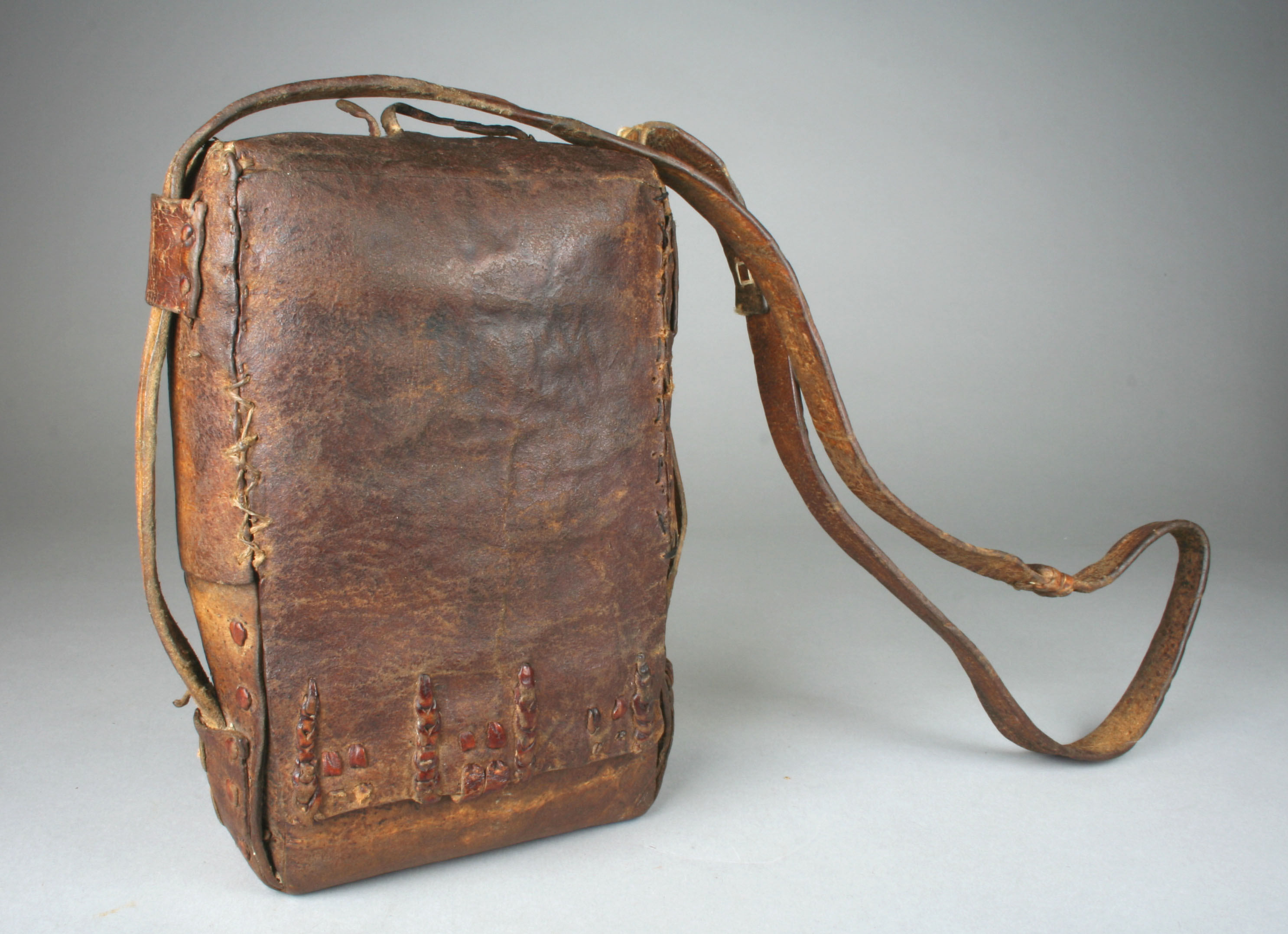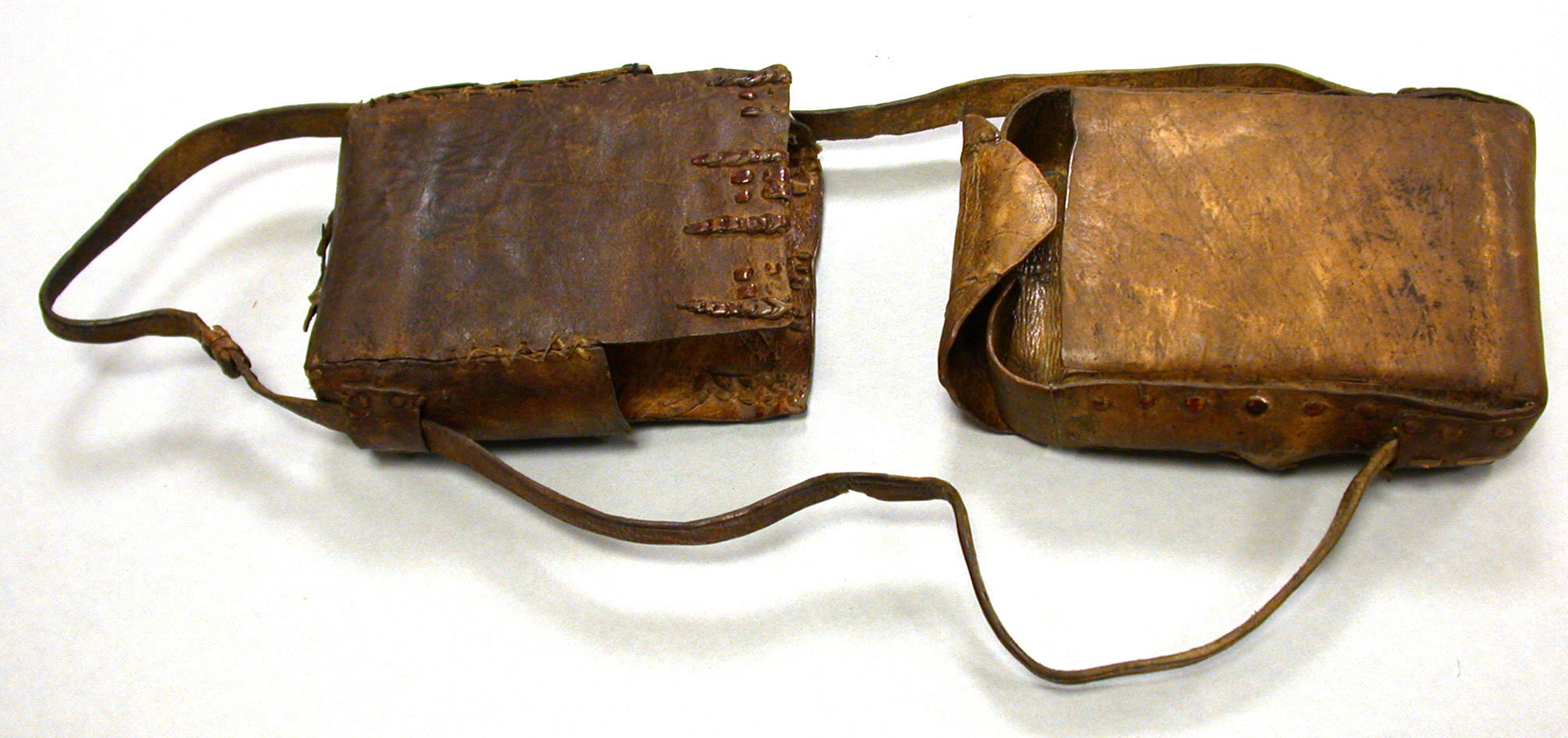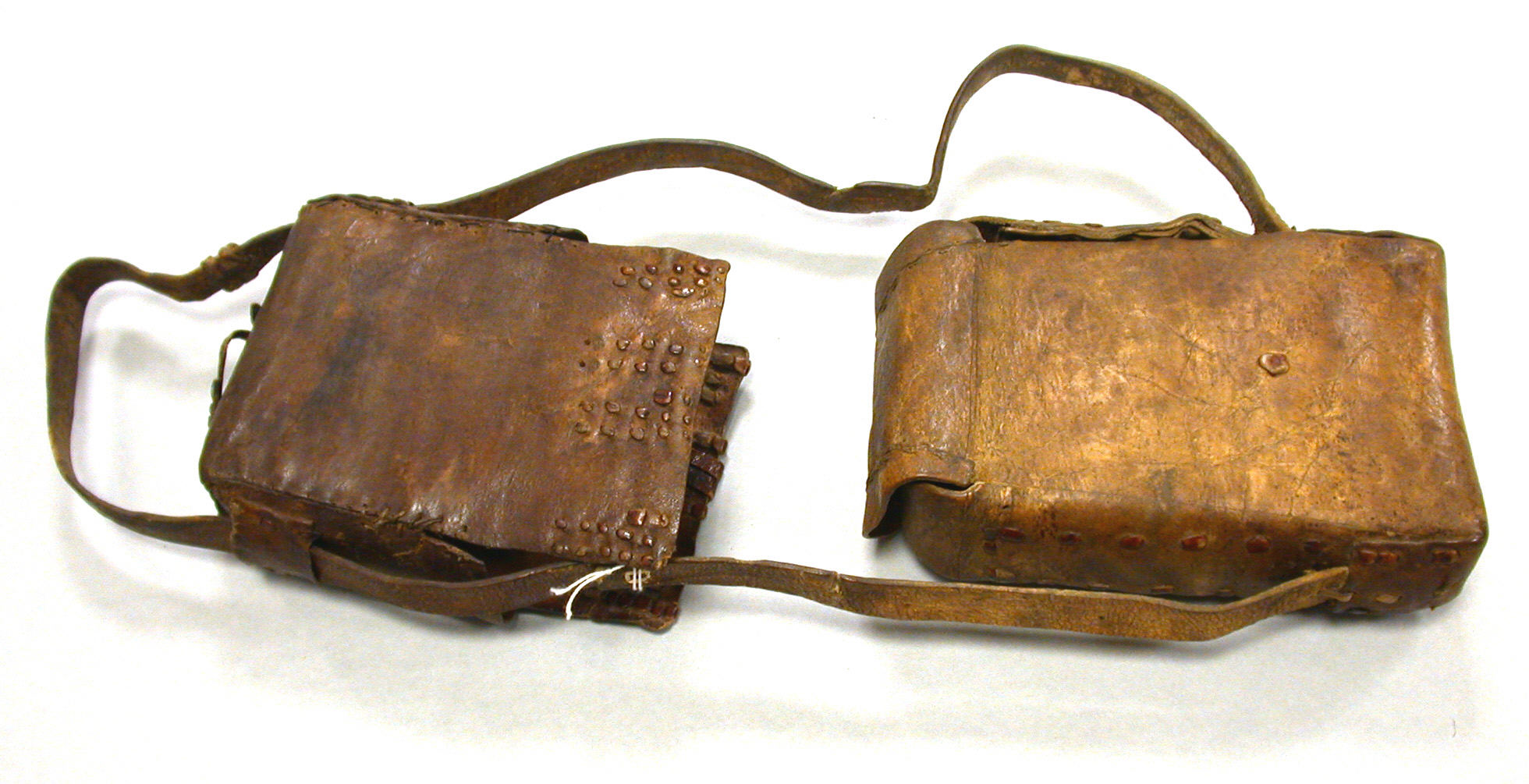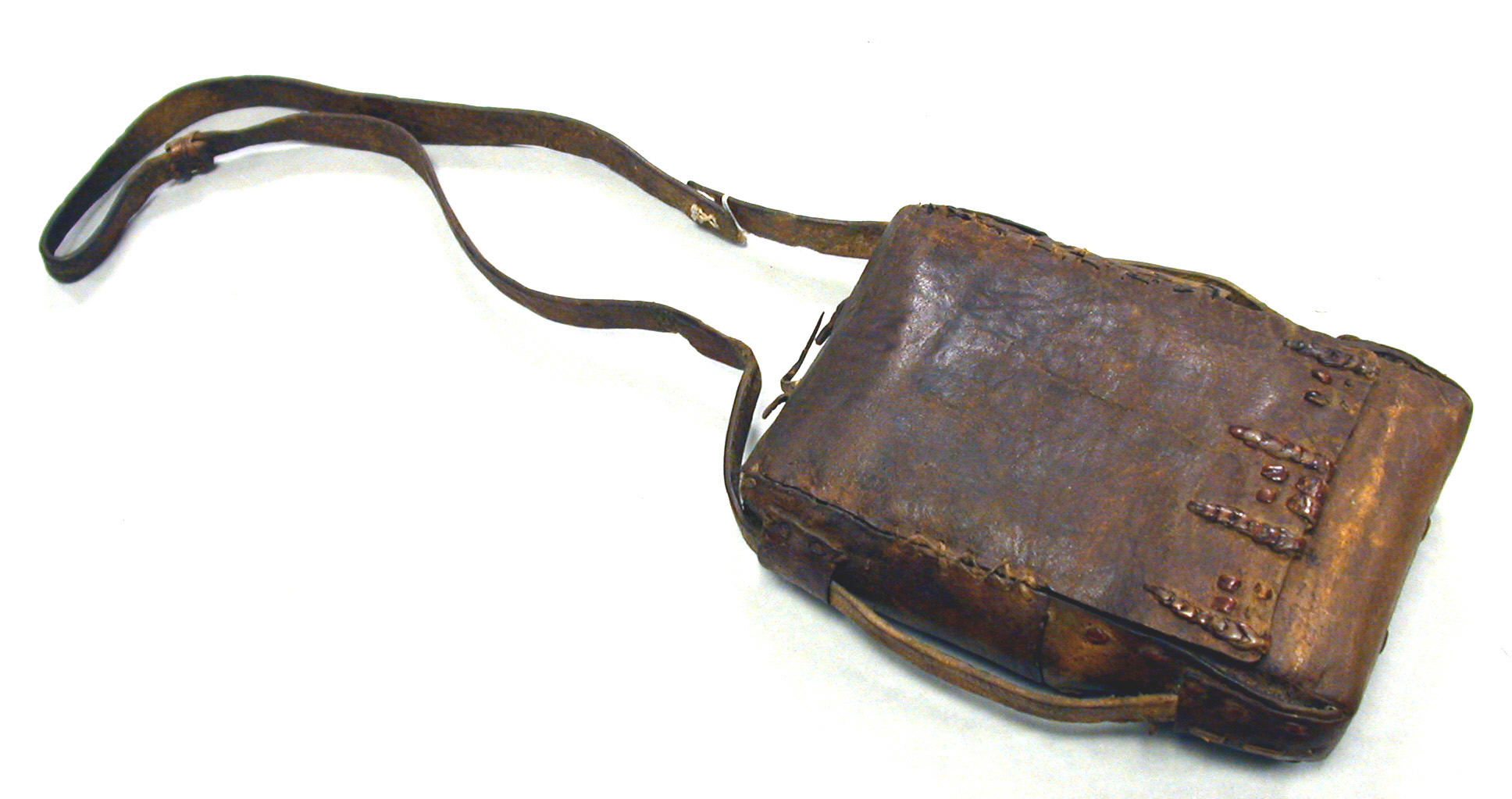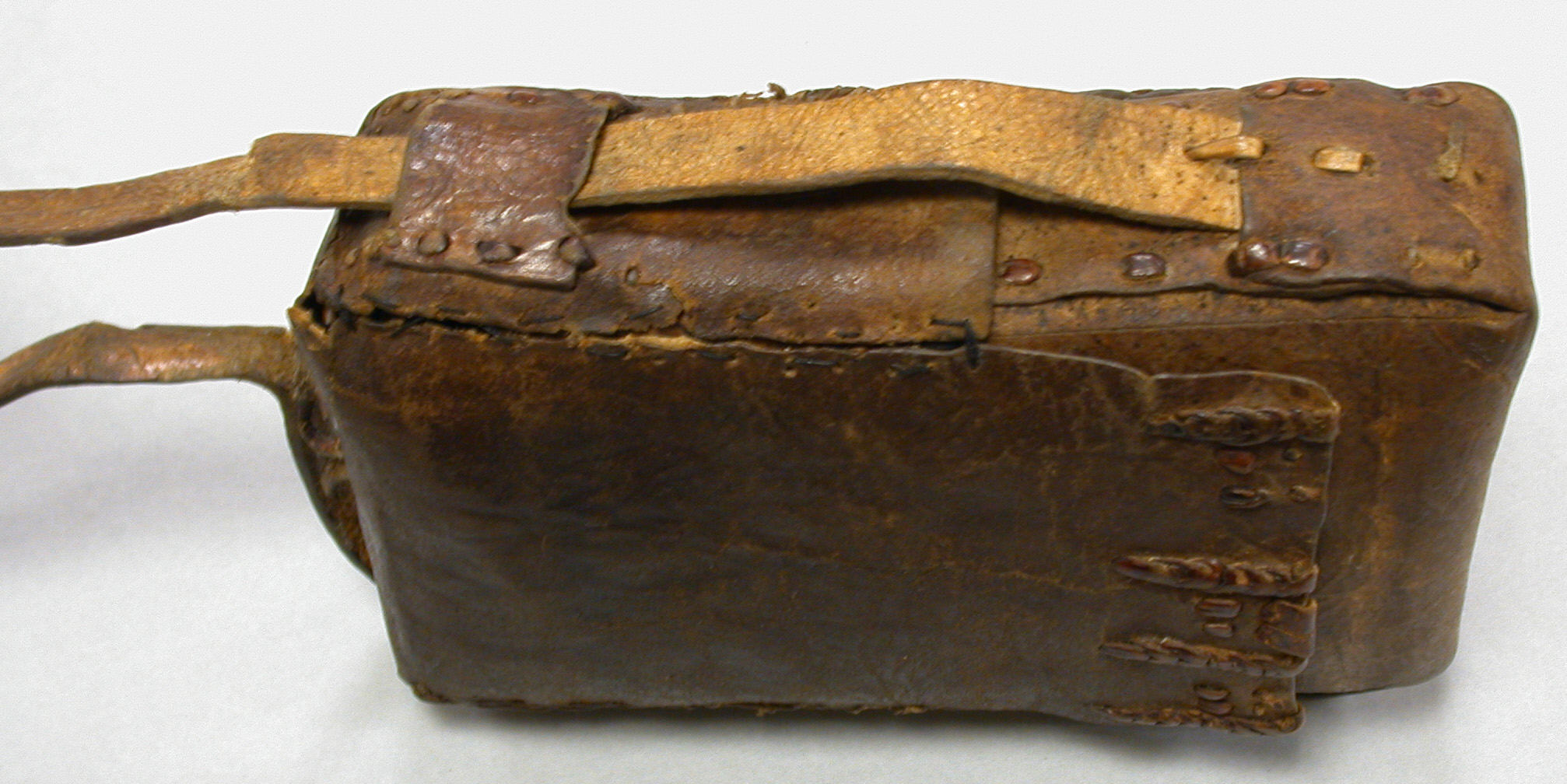Prayer book with case (mahdar)
Wäldä Maryam African
Not on view
This leather-bound manuscript is a prayer book written in Gə’ez, the liturgical language of the Ethiopian Orthodox Church. Its 144 folios features three distinct kinds of ornaments: a single full-page illumination; interlaced borders (haräg); and textual ornament, including punctuation marks and headers. The full-page illumination on folio 1v may have been added to the book at a later date, a suggestion supported by the presence of writing in a hand different from that used in the rest of the book on its recto side and the partial nature of the image. Painted in red and ochre with a black outline, the illumination depicts a boy carrying a piece of bamboo and a whip. The scalloped waves of his hair are outlined and encircled by a halo composed of radiating parallel black lines. His face and figure are well-modeled with gradient colored shading that contrasts with the opaque lines of colors that form the folds of his shorts and the red wrapper tossed over his left shoulder. The tail of the wrapper and the left leg, bare toes barely grazing the invisible ground, extend towards the left side of the page, giving a sense of forward motion. The whip held in his extended right arm is cut off at the edge, suggesting that it once continued across a larger piece of parchment. Jacques Mercier has interpreted this figure as David, from the Old Testament story of David and Goliath (Object File, 2005). However, as the illumination lacks an accompanying written caption typical of Ethiopian painting, the identification remains open to other possibilities.
The second class of illustrations, haräg, appears on folios 2r, 7r, 55r, 72r, 84r, 108r, 125r, 135v, and 141r. The name haräg evokes the vineline interlacing motifs used in these bands, and highlight and separate key parts of the text. Painted with blue, black, ochre, and red, the haräg in this volume incorporate several repeating motifs in a variety of arrangements: multi-petaled flowers; quatrefoils; interlaces; scrolling leaves; nested triangles; and almond-shaped eyes with dark black pupils. These singular eyes do not represent actual organs, but symbolize the protective powers of the eyes, which serve to deflect demons. The repetition of motifs ensures that each haräg is unique, yet remain harmonious throughout. As is common in texts written inGə’ez, the main text is composed in a carbon-based black ink, while vegetable-based red ink is reserved for proper names, punctuation marks, and headlines. The entire text is written with a small, very even hand: a colophon on folio 140v identifies the scribe as Wäldä Maryam. Small pieces of red or blue thread are tied to the edges of several pages.
As scribe of this manuscript, Wäldä Maryam was likely responsible for all physical aspects of its creation, including the making of parchment and ink, binding, and illumination. Parchment for a book of this scale and quality was likely sourced from the skin of a goat or a gazelle. After soaking in water, skins are tied to a frame to be scraped clean of fat and flesh with a curved metal knife and a pumice stone, then dried in the sun. After drying, the skin is again scraped to remove hair and make the surface even. Prior to removal from the frame, the skin is pricked with an awl to indicate where the bifolio parchment sheets will be cut. Faint lines are then scored on the flesh side to guide the scribe’s pen, or to block out areas for illuminations. After the text and illuminations are complete, the collated bifolios are bound into quires, small collections of parchment leaves, and then bound with a kind of chain stitch. This manuscript’s 144 parchment pages and one paper page are bound into twelve quires.
Ethiopian manuscripts are nearly always bound between pieces of wood. Especially valuable works, such as this prayer book, were then covered with dyed and ornamented leather. Once glued to the wooden cover with starch paste, the scribe decorated it with blind tooling, the stamping of designs into the leather with heated metal tools. While a large variety of patterns is preferred, as is typical in smaller codices, the cover of this prayer text incorporates only some of the most commonly used.The decorative motifs are not purely abstract, but often carry names that evoke both their own forms or the names of religious symbols. The bars of the central cross and the corner of the second border are tipped with nested circles called “dove’s eye” (ayne regib, ዓይነ:ርግብ), while the innermost border contains an interlace design (zig-zag, ባለባመድ) evocative of the illuminated haräg within the manuscript. The interior blind tooling of the front cover is obscured by a Watson Library book plate, which indicates that the book was once housed on the library’s “Modern Art” shelf. Though it obscures the blind tooling on the interior cover leather, this book plate testifies to the history of the volume within the institution of the Metropolitan Museum of Art: after entering the library’s collection in 1895, it later moved to the Medieval Department in 1986, and to the Department of the Arts of Africa, Oceania, and the Americas (now the Michael C. Rockefeller Wing) in 1991. Along with an Ethiopian healing scroll (95.66), it is one of the earliest African objects to enter the Metropolitan’s collection. A luxury volume like this was typically enclosed in a leather pouch, which this volume retains.
A leather case (mahdar) was crafted from flat pieces of leather stitched and braided together to form a pouch with an accompanying cover that ingeniously slides up the case’s hanging strap, held in place by bands on either side. Most commonly pulled taut to the top of the cover to form a long strap, this feature allowed the book to be carried or hung for storage. The strap can also be pulled along the short side of the case to create a smaller handle. Books were typically hung from zebu horns secured into walls, stored underneath priests’ beds, or stacked in church treasuries. Tightly sealed leather cases simultaneously protected the precious volumes from water, dust, and insects.
Kristen Windmuller-Luna, 2016
Sylvan C. Coleman and Pam Coleman Memorial Fund Fellow in the Department of the Arts of Africa, Oceania, and the Americas
Further Reading
Selassie, Sergew Hable. Bookmaking in Ethiopia. Karstens Drukkers B.V, Leiden, 1981.
Due to rights restrictions, this image cannot be enlarged, viewed at full screen, or downloaded.
This artwork is meant to be viewed from right to left. Scroll left to view more.






